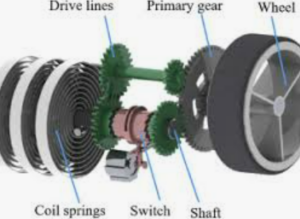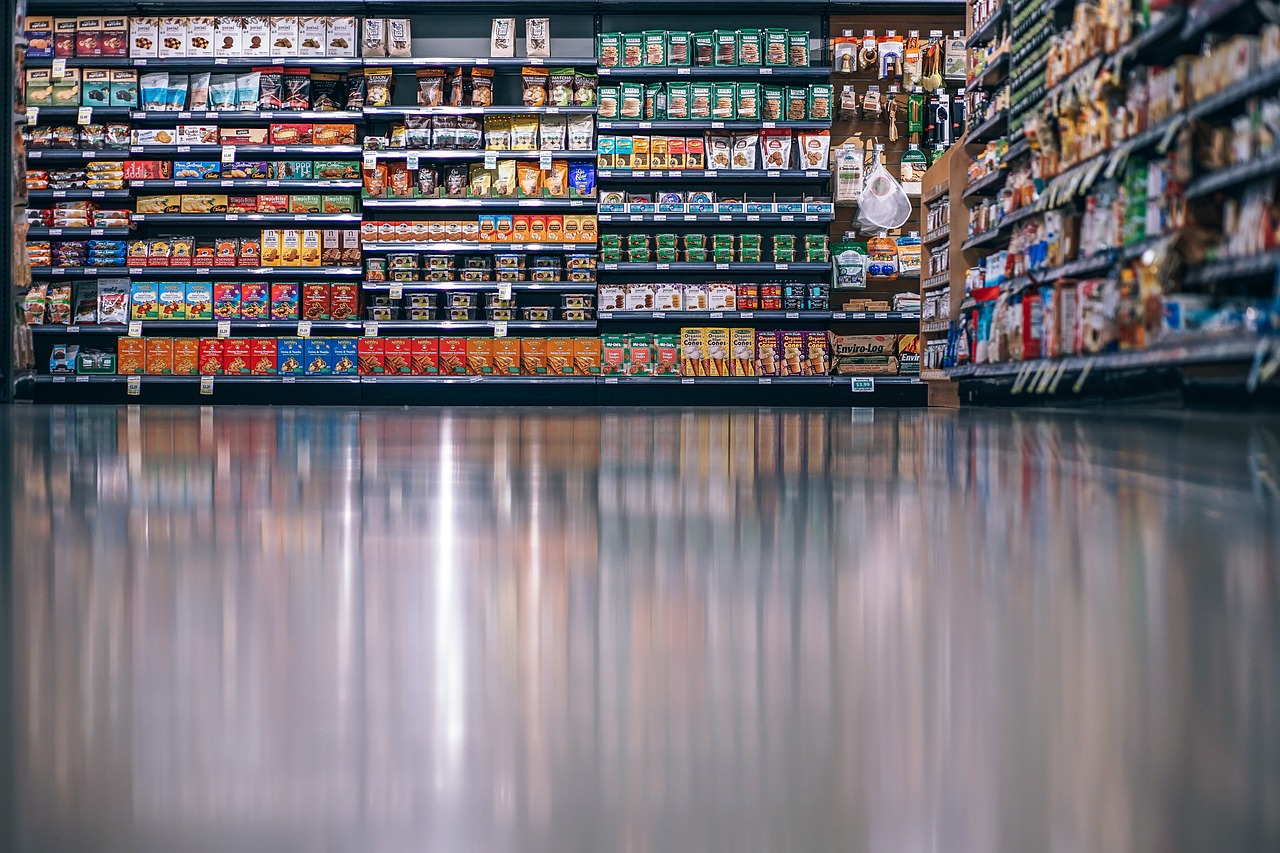Proposed Methodology
System Design

Key components of Product:
- Panel screen for the scanned items and prices.
- Panel to display the searched item.
- Store shelves map, helps to find item location.
- Help button provides guidance how to use the trolley.
- Search bar for searching any item located in the store.
- Keyboard for typing.
- Pay button to activate payment function. Only card payment is supported for security reasons.
Scanning product: All the products in the mall will be equipped with RFID tag. The Smart Trolley will have a RFID (Radio frequency identification) scanner to scan information of tag which glued on the sale items.
Scanner sends this code to the mainboard, after matching the code with data base of codes stored in memory. The mainboard reads the item’s name, cost & other details. Then it displays on screen. The screen also gives us the real time list of the products purchased along with its quantity and cost. This allows the user to keep the track of the total cost at the time of shopping which improves the shopping experience.
The scanner is well equipped with a system that enables customers to remove the product that was already scanned without any problem. The customer can place the item already scanned on shelves again, and continue shopping.
Main board: It contains all the required interfaces that communicate to peripheral components such as keyboard, wifi, and the screen.
Screen is used as main output device for the customers. It displays the details of items, price and total bill etc. to indicate the activity made by customer.
Payment Methods and Receipt Generation Payment: allows users to complete their purchases from the Smart Trolley. The present payment system on the tills and self-service checkout allows for both card and cash payments, however for security reasons and to deter theft, the propose system can only accept card payment. This can be achieved in two ways.
- Customers can enter their card details through the till service application and processed online.
- Using the wireless chip and PIN device on the Smart Trolley. When customers finish shopping, the terminal of Smart Trolley will automatically send receipt via text message or email to intended customer. For registered customers, they are not required to fill in personal information such as email address and phone number every time, this will already be stored in the store database.
Software Design
The software associated with our product shall contain product information, location, availability and pricing. Connection to the database is user friendly with a simple and interacting interface. Customers will be able to search for products and the product location in the store (that is aisle and shelf number) can also be displayed on the screen of the controller board on the Smart Trolley and advice on the quantity available in the store.
The present design allows the tills and self-service checkout to have direct access to the store database because they are all directly connected to the network with the database server. However the self-service checkout only allows customer to pay for items. The Main board on the Smart Trolley will also operate in similar way through wireless access. All the Smart Trolleys will be directly and securely connected to the store’s Wireless Local Area Network (WLAN). It has access to the store and online access to the company’s centralised database. The application for the Main board will be designed to work similarly to the application installed on the self-service check-outs. However, the design will have more features for user interaction such as locating products within the store and access to the company’s centralised database to let customers have access to products from other stores. This will allow customers to have the opportunity to place or hold an item from other store that is not available at the local store.
System architecture

This is the system architecture of our Smart Trolley. It is a simple overview representation of how the product will function. It defines the modules and all the components of the project. This is the Use Case diagram of the system in which the interactions of several users with system are shown. There are three types of users who will access the system. They are customer, administrator and operator. Administrator can access the overall application system, whereas the operator at the billing counter can only access the billing module of the system. Customers will only be able to access the trolley module while purchasing items.
Power
The system works in a way that the wheels of the Smart Trolley are linked to a potential energy storage component, such as a coil spring. The spring is wound with each movement of the trolley, regardless of the distance that the trolley travels. When the coil spring has been wound to a pre-determined torque, the spring is released to drive an input to an electrical generator. Once the potential energy in the spring has been dissipated the winding cycle begins again and due to consistent moving of the trolley wheels provide power to the rechargeable devices


Targeted market:
| First Two Years | After Two Years |
Regional | Canada | North America, worldwide |
End-User | Small size supermarkets and shopping malls | Small size supermarkets and shopping malls Medium size supermarkets and shopping malls |
Price | Competitive price | Competitive price |
Distribution Channel | Business to business – Online channels: Amazon, eBay
| Business to consumer – Offline channels: Direct sale to supermarkets and shopping malls or individual |
Regional: In the first two years of our company’s operations, we plan to launch the product inside Canada and focus on marketing our product in large Canadian cities such as Vancouver, Toronto, Montreal and Calgary, as many large sized supermarkets, shopping malls and grocery stores are suited here. After which I will expand the business to other cities in North America and possibly worldwide.
Target price: We expect that the end-users of our product are small and medium sized supermarkets and shopping malls because we realize there is difficult for new startup to compete with other big players such as Sobeys, Kroger or even Amazon who are mature businesses in the market. Our product’s target price is around $300 to $500 which should be competitive in the Canadian market.
Target customer
The target market for this product are small and medium sized supermarkets and shopping malls. We need to address the everyday issues and problems they face in running their businesses. Then they should be given the product description so that our solution can help address the problems they are facing.
The supply of the product will depend on the demand from the retailers. Demand is predicted to be high because the response from consumers shows that the product will be well appreciated by the public due to its features such as mobile checkout and product search which has not yet been implemented. Based on this prediction, the expected market share will be great once the product is launched.
Distribution channels: We will distribute our product through online channels such as Amazon or eBay in the first two years in order to utilize their existing distribution channel. The customers know them so they can reach us quickly. After two years, we plan to directly sell the products to end-customer. This seems to be the most sufficient way in this kind of business.



